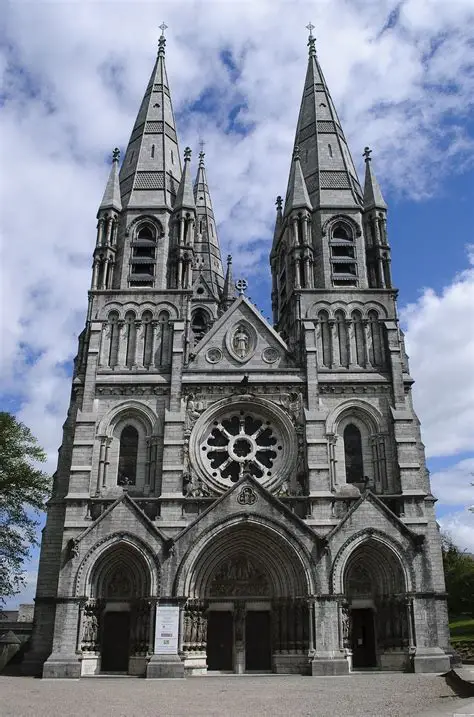
Cue Beetoven, symphony No. 5.
Duuh duh duh duuhhh
Duh duh duh duuuuhhhhhhhh…
That’s the song I get when I’m standing in a gothic cathedral, staring up at the vaulted ceilings, stained glass windows shifting the light into colours not previously seen by mankind, the intricate details of every wall flooded in cool light. My mind goes to a 14th century peasant, brought to his knees in absolute awe of such a scene.
When you think “gothic” you think black, but in architecture, the gothic period (12th to16th century) is known for its light. It’s known for tall sweeping ceilings, flying buttresses, and pointed arches, but most of all, it’s known for bringing the heavenly down to earth, through light, airy masterpieces of stained glass. It’s known for changing our relationship with light and windows, by fundamentally changing the way we build.
In the period prior to the Gothic (the Romanesque, for the A+ students), We only really built half-circle arches. The issue with this is that the width has to grow proportionally to the height, and with an increased width, the thickness of the walls increases (I could get into the math but just trust me). This means that as we want to build taller and taller buildings, they must get wider and wider, and this isn’t good, nor cheap. So, we needed to find another way. We looked east; we looked to Islamic architecture. (I love when a good idea gets passed around). Islamic architecture had what we now know as the pointed arch. The pointy nature of this new kind of arch meant that we could build much higher vaults, with a much smaller footprint. But there was still an issue: while the pointed arch had reduced some of the outward thrust associated with semi-circular arches, the walls were still being pushed outward. Enter the Flying Buttress. Apart from having just about the coolest name, flying buttresses look incredibly hardcore, and horizontally support the tall walls without blocking out light.
While perhaps a less official, but definitely cooler feature of gothic architecture is the use of Gargoyles. As well as looking ridiculously metal, and making any building 10 times cooler, they also direct water off and away from the building, protecting the walls and mortar from corrosion. As an added bonus, Gargoyles are known to ward off evil spirits and come alive to pester the inhabitants of Notre Dame cathedral.
Altogether, these new ideas led to the development of what we now know as Gothic Architecture: towering ceilings, ranks of pointed arches and flying buttresses, grotesque sneering gargoyles, and rows on rows of intricate stained-glass windows, allowing light to sweep into the space, filling every corner with colour. Never before had buildings been able to be so tall and lofty, so magnificent and complex. Never before had buildings been able to be so bright, so beautifully lit up with only the sun.
The Gothic period is when things finally started looking pretty, when we realised it’s not so hard to build churches that don’t fall down without having 3-meter-thick walls (Shit, maybe civil engineers are useful). To me, it is history and architecture manifest: the capabilities of humankind finally reaching the precipice of beauty, exploring new ways in which elegance and function can co-exist. It speaks to the idea that we are constantly finding new ways to create beautiful things. To me, gothic architecture is about wanting to create something so far beyond anything that had been seen before. Something awspiring and beautiful, enough to bring you to your knees. Something breath taking.